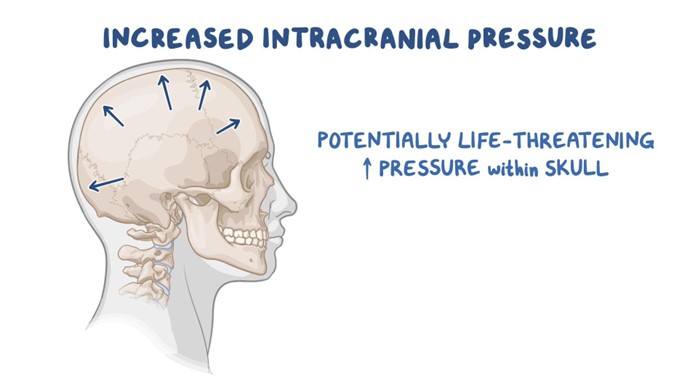A charge nurse is making a room assignment for a client who has scabies. In which of the following rooms should the nurse place the client?
A negative-pressure isolation room
A positive-pressure isolation room
A private room
A semi-private room with a client who has pediculosis capitis
The Correct Answer is C
Choice A reason: A negative-pressure isolation room is not a suitable room for a client who has scabies. A negative-pressure isolation room is used for clients who have airborne infections, such as tuberculosis or chickenpox. It prevents the contaminated air from escaping the room and infecting other people.
Choice B reason: A positive-pressure isolation room is not a suitable room for a client who has scabies. A positive-pressure isolation room is used for clients who have compromised immune systems, such as those undergoing bone marrow transplants or chemotherapy. It prevents the outside air from entering the room and exposing the client to germs.
Choice C reason: A private room is a suitable room for a client who has scabies. Scabies is a skin infection caused by tiny mites that burrow under the skin and cause intense itching and rash. Scabies can spread easily through direct skin-to-skin contact or sharing personal items, such as clothing or bedding. A private room can prevent the transmission of scabies to other clients or staff.
Choice D reason: A semi-private room with a client who has pediculosis capitis is not a suitable room for a client who has scabies. Pediculosis capitis is an infestation of head lice that feeds on human blood and causes itching and irritation on the scalp. Pediculosis capitis can also spread easily through direct contact or sharing personal items, such as combs or hats. Sharing a room with another client who has pediculosis capitis can increase the risk of cross-infection and complicate the treatment of both conditions.
Nursing Test Bank
Naxlex Comprehensive Predictor Exams
Related Questions
Correct Answer is A
Explanation
Choice A reason: Hypertension is a manifestation of increased intracranial pressure, as it reflects the body's attempt to maintain adequate cerebral perfusion pressure (CPP) and blood flow to the brain. CPP is the difference between the mean arterial pressure (MAP) and the intracranial pressure (ICP). When ICP rises, MAP must also rise to keep CPP constant and prevent cerebral ischemia. Hypertension is part of the Cushing's triad, which is a classic sign of increased ICP that also includes bradycardia and irregular respirations.
Choice B reason: Tinnitus is not a manifestation of increased intracranial pressure, as it does not affect the auditory system. Tinnitus is a ringing, buzzing, or hissing sound in the ears that can be caused by various factors, such as ear infections, noise exposure, medications, or aging. Tinnitus may be associated with other neurological conditions, such as Meniere's disease, acoustic neuroma, or multiple sclerosis, but not with increased ICP.
Choice C reason: Hypotension is not a manifestation of increased intracranial pressure, as it indicates a decrease in MAP and CPP, which can lead to cerebral ischemia and infarction. Hypotension can be caused by various factors, such as blood loss, dehydration, shock, or medications. Hypotension may worsen the outcome of increased ICP by reducing the oxygen and nutrient delivery to the brain.
Choice D reason: Tachycardia is not a manifestation of increased intracranial pressure, as it contradicts Cushing's triad. Tachycardia is an increase in heart rate that can be caused by various factors, such as anxiety, pain, fever, dehydration, or medications. Tachycardia may increase the oxygen demand and metabolic rate of the brain, which can exacerbate the effects of increased ICP.

Correct Answer is B
Explanation
Choice A reason: Giving care with a focus on the aggregate's needs is not the best description of client-focused community-based nursing, as it implies that the nurse is providing care to a population or a group of individuals who share some common characteristics or risk factors. This is more aligned with the concept of population-focused community-based nursing, which aims to improve the health outcomes of a defined group of people.
Choice B reason: A philosophy that guides family-centered illness care is the best description of client-focused community-based nursing, as it reflects the core values and principles of this approach. Client-focused community-based nursing is a model of care that emphasizes the individual and family as the unit of care, rather than the disease or the health problem. It involves collaborating with the client and family to identify their needs, preferences, strengths, and resources, and providing holistic, culturally sensitive, and evidence-based care that promotes health, wellness, and quality of life.
Choice C reason: Providing care with a focus on the group's needs is not the best description of client-focused community-based nursing, as it suggests that the nurse is providing care to a collective or a social unit that shares some common goals or interests. This is more aligned with the concept of community-oriented community-based nursing, which aims to improve the health status of a specific community or subpopulation.
Choice D reason: A value system in which all clients receive optimal care is not the best description of client-focused community-based nursing, as it does not capture the essence or uniqueness of this approach. While it is true that client-focused community-based nursing strives to provide high-quality care to all clients, it also recognizes that each client and family has different needs, preferences, and expectations that require individualized and tailored interventions.
Whether you are a student looking to ace your exams or a practicing nurse seeking to enhance your expertise , our nursing education contents will empower you with the confidence and competence to make a difference in the lives of patients and become a respected leader in the healthcare field.
Visit Naxlex, invest in your future and unlock endless possibilities with our unparalleled nursing education contents today
Report Wrong Answer on the Current Question
Do you disagree with the answer? If yes, what is your expected answer? Explain.
Kindly be descriptive with the issue you are facing.
